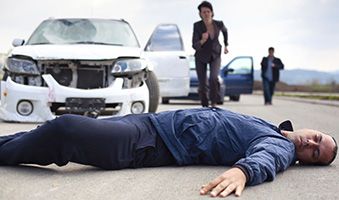Progress
Online CPR/AED/First-Aid ClassAssess The Scene - Call 911Assessing the SceneIt is important to make sure the scene is safe, and that there is no danger threatening you or the person you are trying to help. Even after you begin providing first aid, you must remain aware of your surroundings, and alert to anything on the scene that might change and put you in danger. While assessing the scene, ask yourself these questions.Is there danger for myself or the person I am trying to help?
Are there others around to help?
Who is ill or injured?
Where are you?
 Phoning for HelpAs you assess the need for first aid, you’ll need to know when and how to phone for help. Calling 9-1-1 activates the EMS network of responders. Make sure that you also know where the nearest phone is. First aid kits and AEDs are often stored near emergency phones. When to Phone for HelpYour company may have guidelines on when you should call 9-1-1 emergency services. As a general rule, you should call 9-1-1 when someone is seriously injured, or if you don’t know what to do in an emergency. You should call 9-1-1 if the person you’re trying to help
You will learn more about how to recognize and respond to these emergencies later on. |
Who Should Phone for HelpIf you are alone:
If you are with others:
While on the phone with the dispatcher, do not hang up until they tell you to. Answer their questions. The emergency responders will be able to help sooner and more easily if they know where you are and what the situation is. |
Instructor: Mike Figuero
Publish Date: 2023-04-02
Last Updated: 2023-07-18
